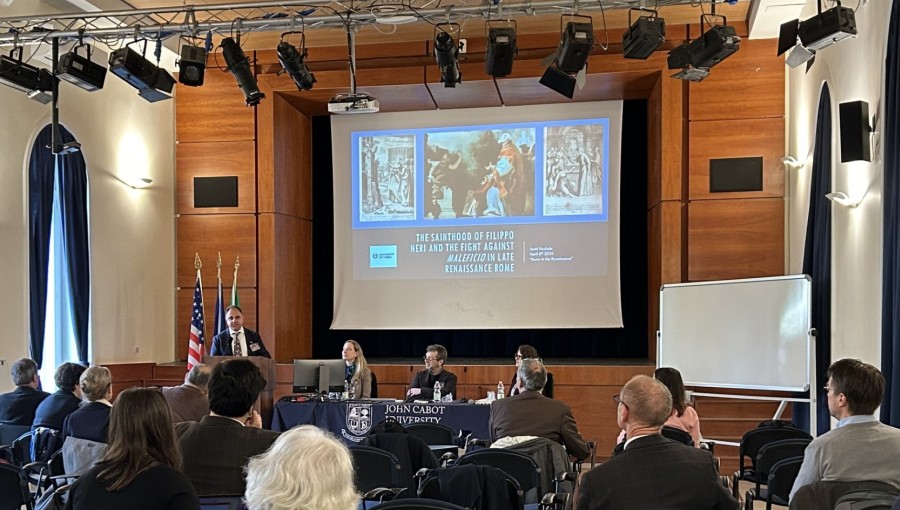Fashion Through History: A Lecture by Professor Fabrizio Conti
Tell me what you wear and I’ll tell you who you are.
Professor Antonella Salvatore welcomed History Professor Fabrizio Conti to her Retailing Applied to Fashion course to discuss “Fashion through History and a Humanistic Approach,” on September 16. Taking a historical approach to fashion and its influence on society, Professor Conti argued that “fashion is all about people and relations, as well as information and our relationship to society.”

Fabrizio Conti
In his presentation, Professor Conti discussed medieval, Western European clothing with respect to three main social categories: the clergyman, the knight, and the witch. For instance, the cassocks of medieval Christian monks could range from deep black to pure white in color. Such choices in clothing visually communicate a variety of values, such as penitence in the case of a black cassock, or purity in the case of a white cassock. One reformation group of monks, the Cistercians, notably wore black and white cassocks, thereby communicating a double meaning of sorts. Similar to monks, even the clothing of Catholic clergymen has provided ample proof of color conveying meaning. For example, the use of scarlet and red in the fashion of the Catholic order represents the importance of sacrifice, passion, and above all, love. “The importance of fashion is precisely that,” said Conti, “to be a symbol.”
Operating in a similar vein, medieval orders of knights were both religious and political Christian figures. As such, their monk-soldier dual nature was communicated by the design of their clothing: the Christian cross on their chest was red to symbolize war, whereas the rest of the garment was white to symbolize purity. Clothing is “social coding,” explained Conti, in both a literal and figurative sense. Fashion reveals our relationship to society, power structures, identity, religion, and so on. At one point, this relationship became quite literal in provincial Europe, with the order of a medieval pope to distinguish the Christian population from the Jewish population by requiring Jews to wear yellow patches on their clothing. “Sound familiar?” asked Conti.
The final social category that Conti touched upon was that of 15th-century witches. Often depicted as naked, or at most, somewhat cloaked, witches were a category that revealed their relationship to society and social order with a distinct lack of clothing. That is to say that in a society where clothes indicate social order, value, and identity, nakedness communicates social disorder, contrarianism, and a lack of belonging.
Conti maintained that by examining the clothing of various historical characters, it is possible to trace the evolution of different groups’ relationships to society or religion. An example of this is the difference between the visibly conformist fashion of clergymen and medieval knights versus the visibly contrarian fashion of 15th-century witches. Even now, Conti pointed out, by looking at the current situation in Afghanistan, one of the first things that the Taliban is seeking to regulate is women’s clothing. Whether or not Afghan women abide by these new regulations communicates their relationship to the social order.





